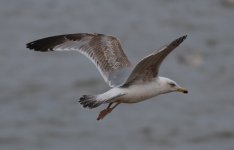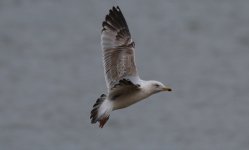I assume this is a 3cy Herring Gull, but struggling to age this bird, as (to me) is has some variable features. Very clean looking bird with no head streaking, pale eye, almost adult type bill. Pronounced tail band. Lots of grey median coverts.

I've also not been able to rule out YL Gull 100% but would expect them to actually have yellow legs at this point.


I've also not been able to rule out YL Gull 100% but would expect them to actually have yellow legs at this point.
Last edited:




